Lesser celandine identification and control
Information about the noxious weed lesser celandine. Lesser celandine is also known by its Latin name, Ficaria verna.
About this weed
Lesser celandine is a non-regulated Class B noxious weed in King County. This means it is suggested, but not required for control within the county. Lesser celandine is also on the Washington quarantine list and it is illegal to buy, sell or offer it for sale in the state.
Lesser celandine is known as Ficaria verna and it is in the buttercup family. It is also known as pilewort and fig buttercup.
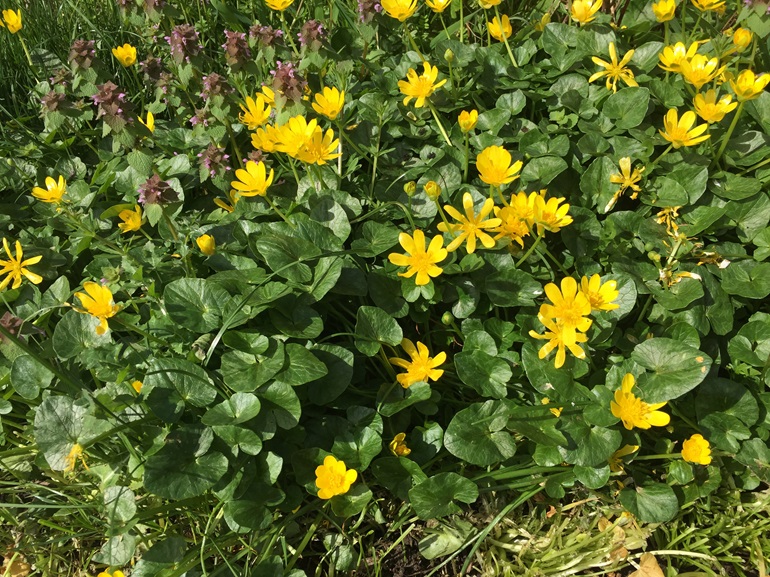
Why it's a problem
Lesser celandine outcompetes and excludes native plants in natural areas. This includes moist forests, wetlands, stream banks and even roadsides. It emerges before most other spring plants. This can give it a competitive advantage over our native understory plant communities. While lesser celandine dies back completely by June, the remaining dense root system can still prevent and outcompete native and other desirable plants. It is invasive, difficult to control, and is spreading in Washington, but still has a limited distribution.
Plant description
Lesser celandine is an herbaceous perennial (plants that have a 2+ year life cycle) originally from Europe and western Asia. It is often found on the fringe of moist wooded floodplains. It forms a dense carpet of vegetation that grows 3 to 9 inches high.
The leaves are shiny, dark green and kidney shaped. The bright yellow, glossy flowers grow in early spring. They are usually solitary on stem tips. It typically flowers in March to April. The entire plant goes dormant in winter, but the dense root system remains, preventing other plants from growing.
The primary mode of reproduction is turions (small buds capable of growing into a full plant). These are easily moved in soil and water. It also produces seeds.
Its preferred habitat is shaded to partially shaded sites though with enough moisture it can survive in full sun. It is often found in deciduous (plant that loses its leaves annually) forests where the plant can bloom and grow well before the forest canopy fills out.
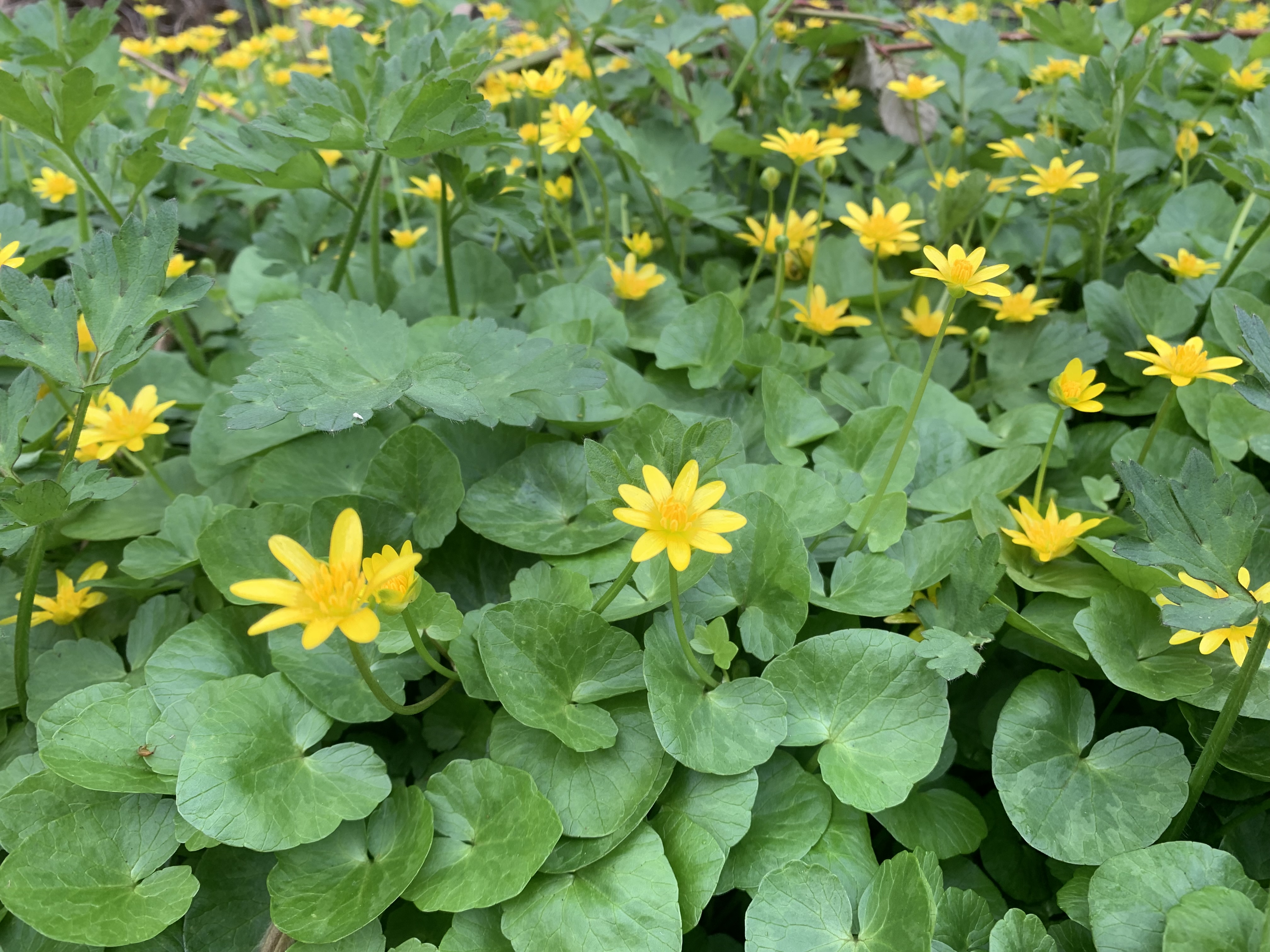
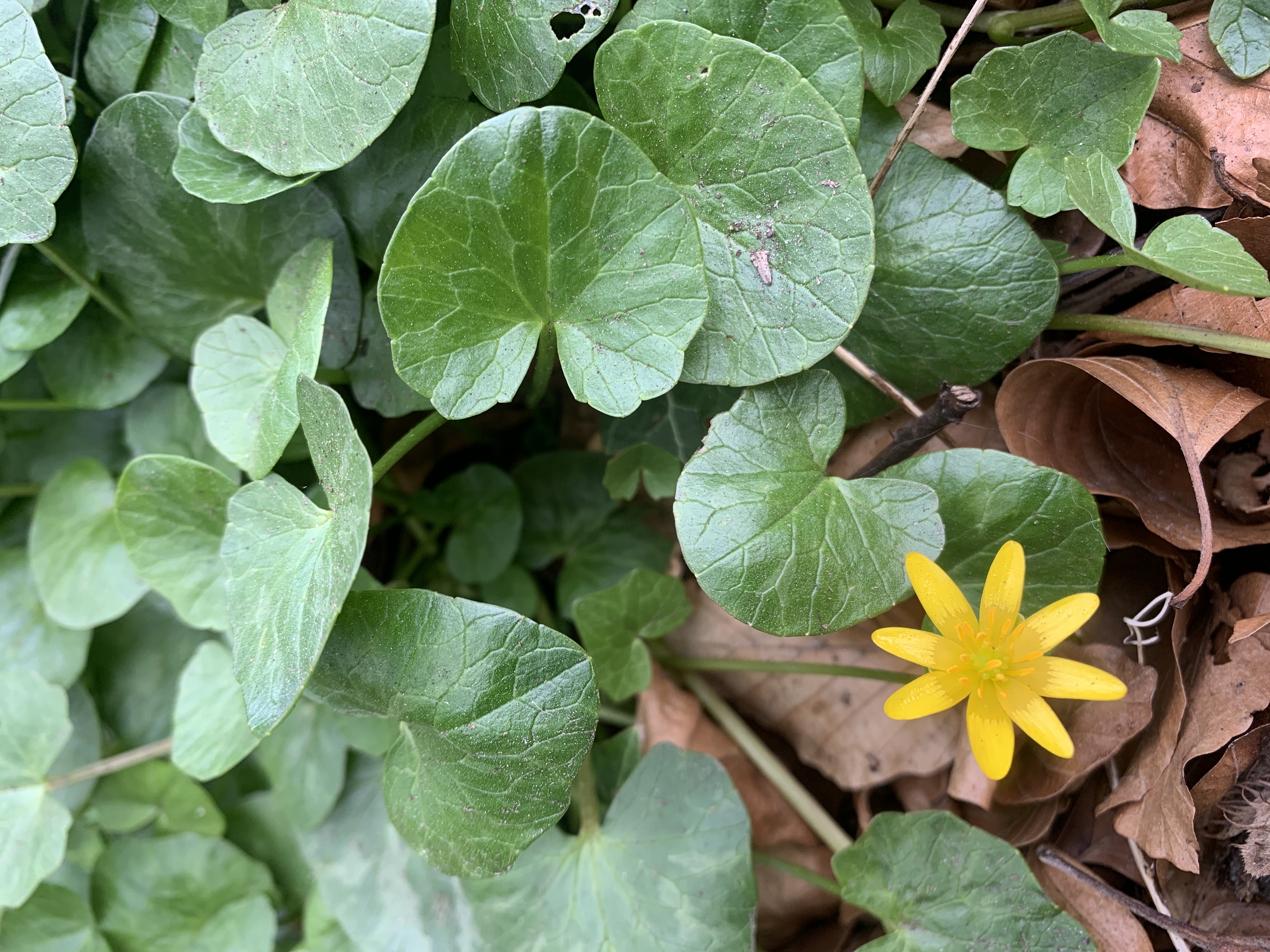
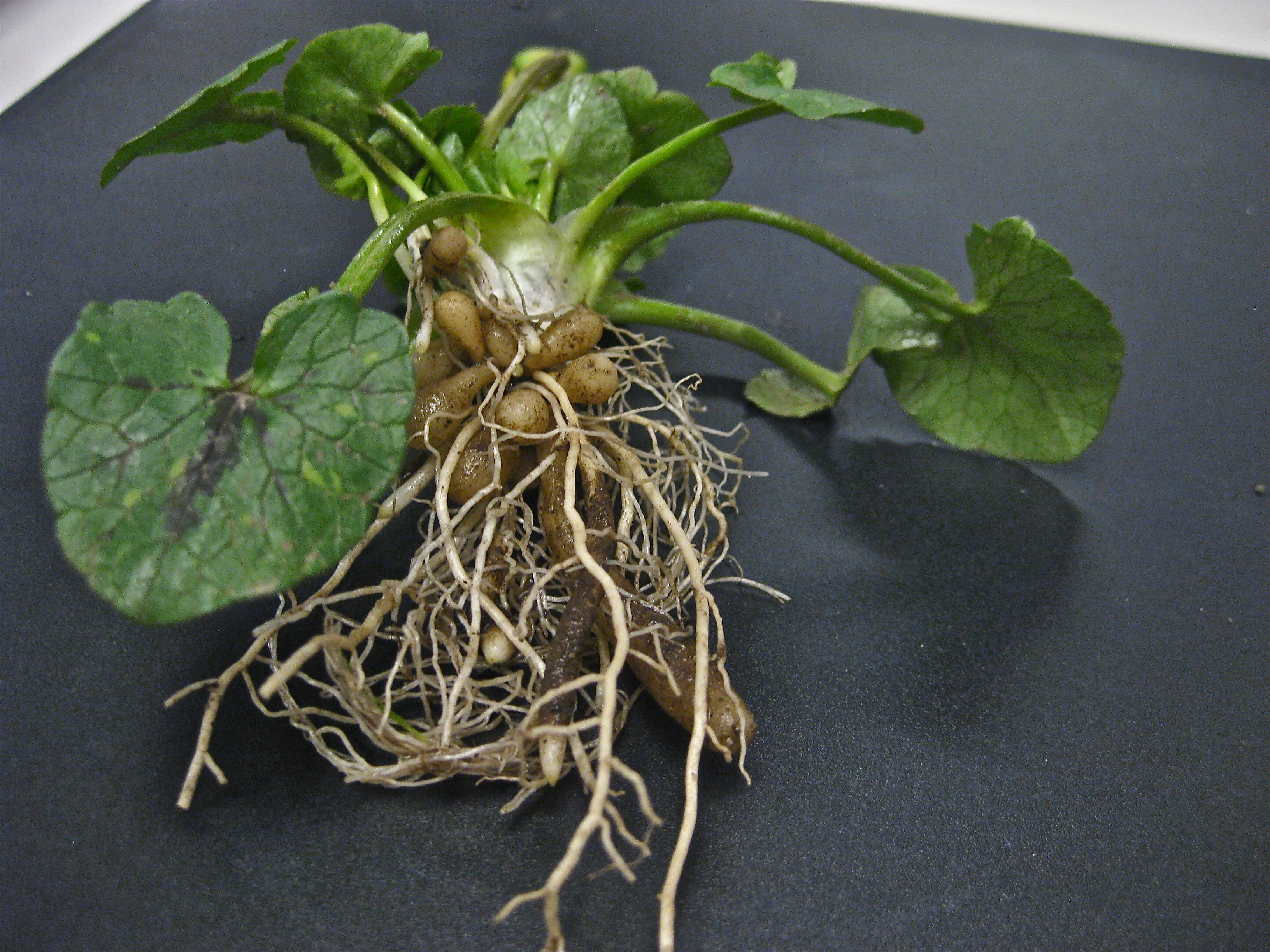
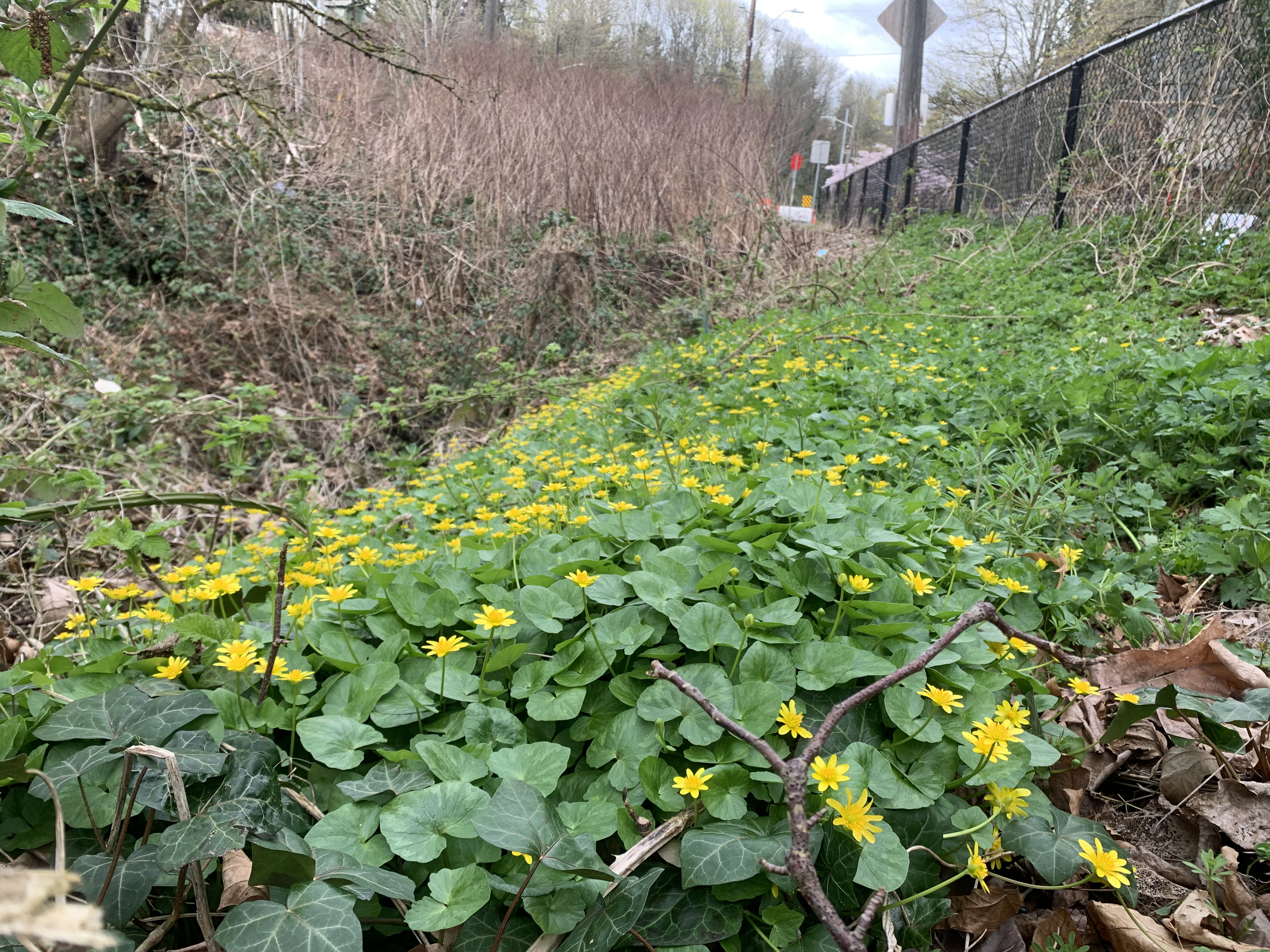
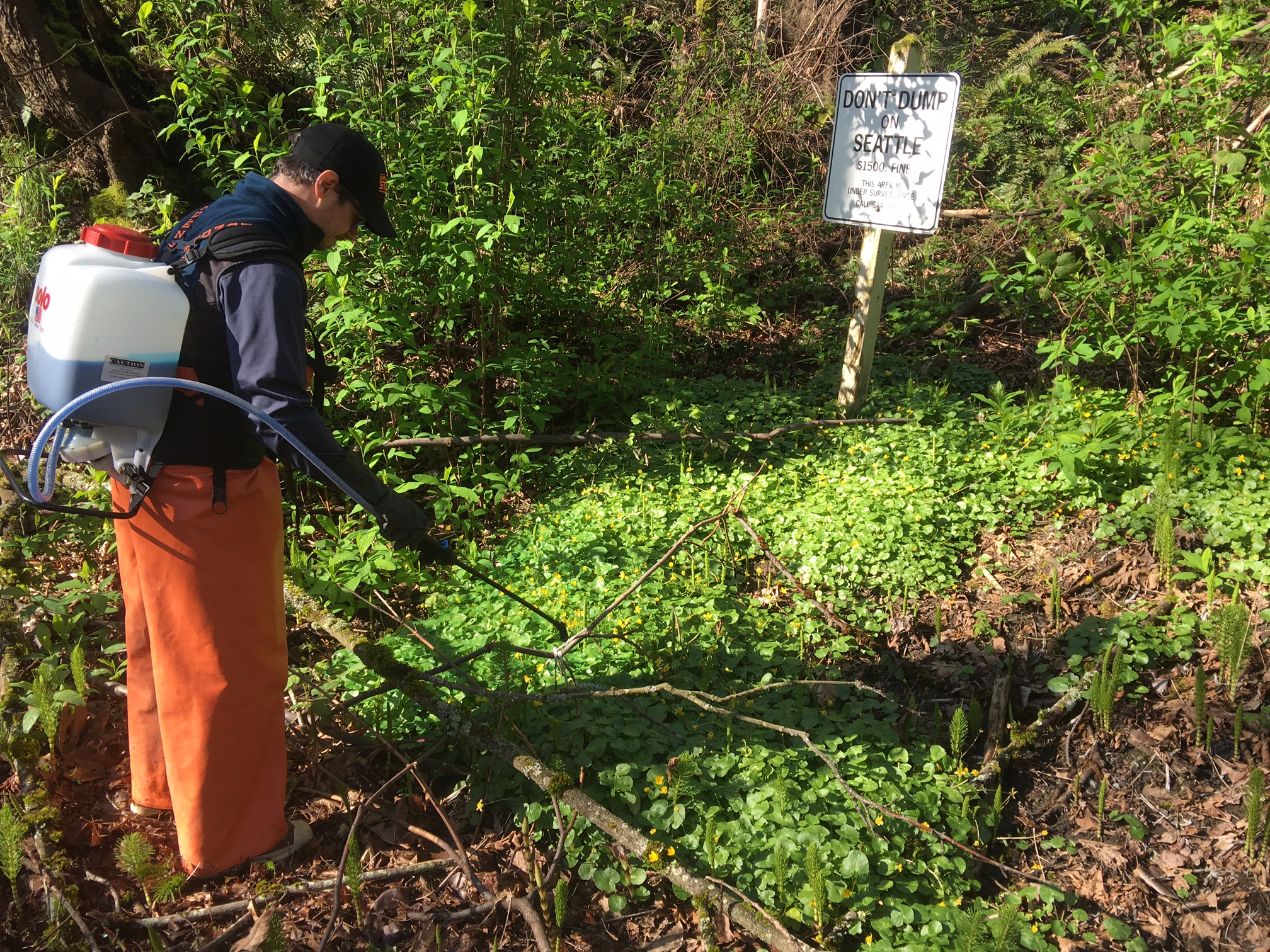
Be aware of look-alike plants
Lesser celandine can be confused with the native wetland plant, yellow marsh marigold, Caltha palustris. Unlike yellow marsh marigold, lesser celandine has sepals that look distinct from the flower petals. Also, yellow marsh marigold doesn’t have tuberous roots or produce turions like lesser celandine does.
Lesser celandine could also be confused with different violet species, which can be a similar size, spreading tendencies and leaf shape. However, in flower, they are very easily distinguished from each other. Lesser celandine’s sprouting and flowering timing in the late winter or early spring, which often doesn’t line up with those of violet species. Lesser celandine’s vegetation can completely die back as early as June.
What to do if you find it
Lesser celandine is not required for control in King County, but control is recommended due to the plants aggressive spread, its difficulty to control once established, and its potential negative impacts in wetlands and natural areas. Our program staff can provide advice on how to identify and control lesser celandine, but there is generally no legal requirement to do so. The King County Noxious Weed Control Board encourages property owners to remove lesser celandine where possible, and to avoid introducing it to new landscapes, as its distribution throughout the state is still rather low.
Control methods
Lesser celandine can be challenging to control once established, so control of existing infestations and prevention of spread into new landscapes is recommended.
We recommend using a combination of methods to control noxious weeds. In areas with few weeds, it is important to act quickly before they become harder to control. Make a long-term plan as it often takes several years to get rid of most weeds. Start in the least infested areas first and then move into more heavily infested areas.
Manual control
Small infestations can be controlled through manual control, by digging up all plant parts and disposing in the garbage (not your garden compost). Be careful, because the plant spreads by seed, root segments, and turions (small buds capable of growing into a full plant) on the stem, so parts left behind can spread into new plants. Because of this reproduction by vegetative parts, mowing is not recommended.
Cultural control
Sheet mulching, with a thick application of at least 6 inches of mulch, can also be effective at smothering lesser celandine and preventing spread.
Chemical control
Stay safe when using herbicide:
- Always read the label before use.
- Wear a long-sleeved shirt, long pants, shoes, and eye protection.
- Follow state and local regulations.
Chemical applications can be used to control larger infestations, using a systemic herbicide like glyphosate or triclopyr to kill the roots, while also limiting the soil disturbance that manual control would require. Herbicide should be applied in the late winter or early spring.
Monitoring and follow-up control will be required. Practices like applying mulch and establishing other desirable plants can help prevent spread. This can reduce maintenance needs.
See the PNW Pest Management Handbook [EXTERNAL LINK: Celedine, lesser (Ficaria verna) | Pacific Northwest Pest Management Handbooks (pnwhandbooks.org)] for the most up to date and specific method for chemical control of lesser celandine.
Avoid spraying where there is a chance that herbicide will enter a waterway or wetland unless you are using a state-approved aquatic herbicide and have the required permits and licenses to do so. Use of pesticides in water is regulated in Washington state. See Washington Department of Ecology Aquatic Pesticide Permits [EXTERNAL LINK: Aquatic pesticide permits - Washington State Department of Ecology] for details.
For more information or a site-specific recommendation in King County, contact the noxious weed program. For information in other locations, contact your local weed board or extension office.
Disposal instructions
Because lesser celandine can spread by seed, root segments and bulblets on the stem, the soil and all plant parts should be disposed of in the trash, and not in the home compost, to prevent further spread.
Washington State Noxious Weed Control Board pamphlet on noxious weed disposal

 Translate
Translate